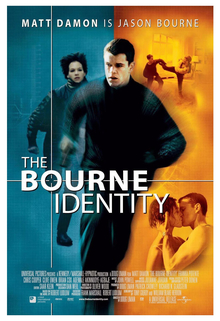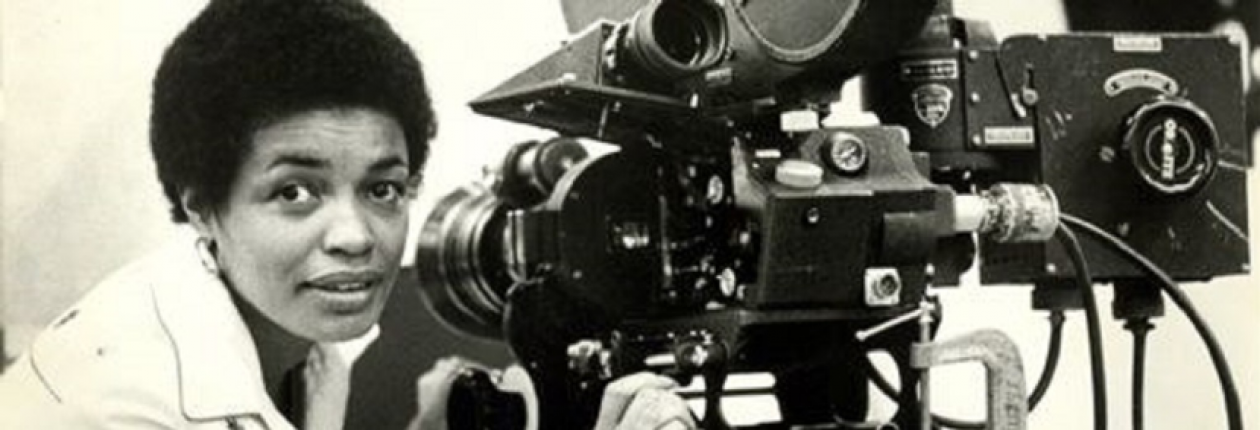Every time I sit down to watch a mainstream action movie… I’m waiting, waiting for the token hot girl to show up and draw in the looks of the main man and the voyeuristic male audience. She is always elusive and resisting, right up until the point where she sleeps with the leading man. I get my hopes up every time, thinking “maybe this is the movie when it doesn’t happen” or “wow maybe she really is here to progress the plot” until inevitably, the leading man becomes too hard to resist
My experience watching “The Bourne Identity” (2002), a “spytainment” (Hasian) movie riddled with american exceptionalism and misogyny, provided me with that same false optimism as every other time I’ve seen an action movie. Marie, the leading woman is introduced when Jason Bourne (Matt Damon) fleeing the swiss government, jumps into her car and offers her $20,000 to drive him to Paris. Marie accepts, as she is in desperate need of the money. For the rest of the film acts is at the whim of the troubles of the fugitive Jason Bourne, supporting him through his time on the run.
The movie uses Marie as an object of voyeuristic male gaze that Laura Mulvey describes in her piece “Visual Pleasure and Narrative Cinema”. The portrayal of the woman in the movie is misogynistic and should be viewed with a critical eye. Bell Hooks describes the oppositional gaze of black female spectators in her piece “The Oppositional Gaze: Black Female Spectators” saying “black viewers of movies and television experienced visual pleasure in a context in which looking was also about contestation and confrontation” Acknowledging that “The Bourne Identity” does not represent black females at all, this confrontational and contestational gaze can still be applied to the representation of women in general in the film, looking specifically at the character Marie. Maire is used as an object of male desire in the film, and exemplifies Laura Mulvey’s idea of “Woman as Image.”
Before even the first frame of the movie plays, the presence of the male gaze is evident. Prominently displayed on the movie poster is an image of Marie and Jason kissing seemingly naked. This invites the viewer to view Marie in a voyeuristic way.

The interpretation of Marie, an unsuspecting, struggling german woman is one that does not align with real women and is all to familiar in action films. Marie is easily convinced to help Jason, as she is presented as helpless and needs to accept his offer. After driving the fugitive Bourne to Paris, she sees her own face on a wanted poster, as an international search for the two ensues. Instead of leaving Bourne behind after she receives her payment she decides to continue to help him.
During viewing I found myself confused about the motivations of Marie. She has nothing to gain and everything to lose by deciding to help him, especially because at this point in the film, their relationship has not taken a romantic turn. But the reality is that Marie’s character does not have the complex motivations I am trying to analyze, she is there simply to provide a point of gaze for the audience and the man in the film. The objectification of Marie is so striking, I could not seem to enjoy the action and plot of the film as I usually would. Similar to the oppositional gaze of black women who “testified that to experience fully the pleasure of that cinema they had to close down critique, analysis, they had to forget women” (Hooks). In order to enjoy this movie, a woman would have to ignore the rampant sexism of the existence of the character of Marie, who I argue is there explicitly to provide an object of sexual desire and sleep with Jason Bourne.
It is frustrating to see so few female characters in action movies, and even more frustrating that when they are present, they are stereotypical damsels in distress, who always seem to fall madly in love with the main male and lose all sense of judgement. These motifs are exemplified in the film “The Bourne Identity.” When a special agent breaks in the apartment where Marie and Jason are hiding, Marie stands by helplessly, periodically screaming.
This reiterates Laura Mulvey’s conclusion that “pleasure in looking has been split between active/male and passive/female” (p. 33) with the man actively manipulating the plot and the woman standing passively by.
After escaping the assassin, Jason and Marie survive yet another car chase and take refuge in a Parisian hotel. With little buildup, the two sleep together even though Marie admittedly does not know who Jason is, as he doesn’t even know himself. This again exemplifies the role of the woman to “work against the devolopment of the story line, to freeze the flow of action in moments of erotic contemplation” (p. 33). Throughout the entire film, Maries actions have little to no effect on the plot.
Another problematic element of the film that I mentioned earlier is the theme of “american exceptionalism” that drives the plot of the film. A perfect example of the “spytainment” films that M. A. Hasian discusses in “Military Orientalism at the Cineplex: A Postcolonial Reading of Zero Dark Thirty.” Bourne, who is an american operative was originally sent to assassinate the black leader of an african nation, Nykwana Wombosi. The movie portrays the dictator as one sided and corrupt, convincing the viewer that his extermination is necessary. When Bourne decides not to murder Wombosi, he is perpetuating a positive portrayal of american military in film, showing the ability of americans to control foreign affairs, but also paining them in a humane light.
Next time I watch a mainstream “Spytainment” film, I’ll hope its different than the others. Hope this time the objectified woman on the poster is complex and manipulates the plot, interacts with other people in a way that is not inherently sexual and helpless. Likely, I’ll be disappointed again, as these misogynistic motifs are what continue to sell films to the american public. It is important that I continue to apply an oppositional gaze towards these portrays, in the hopes that they will improve in the future.
Sources:
Class Readings:
Laura Mulvey, “Visual Pleasure and Narrative Cinema”
Bell Hooks, “The Oppositional Gaze: Black Female Spectators”
M.A Hasian, “Military Orientalism at the Cineplex: A Postcolonial Reading of Zero Dark Thirty”
Video Clips: Youtube
Photo: https://www.imdb.com/title/tt0258463/
